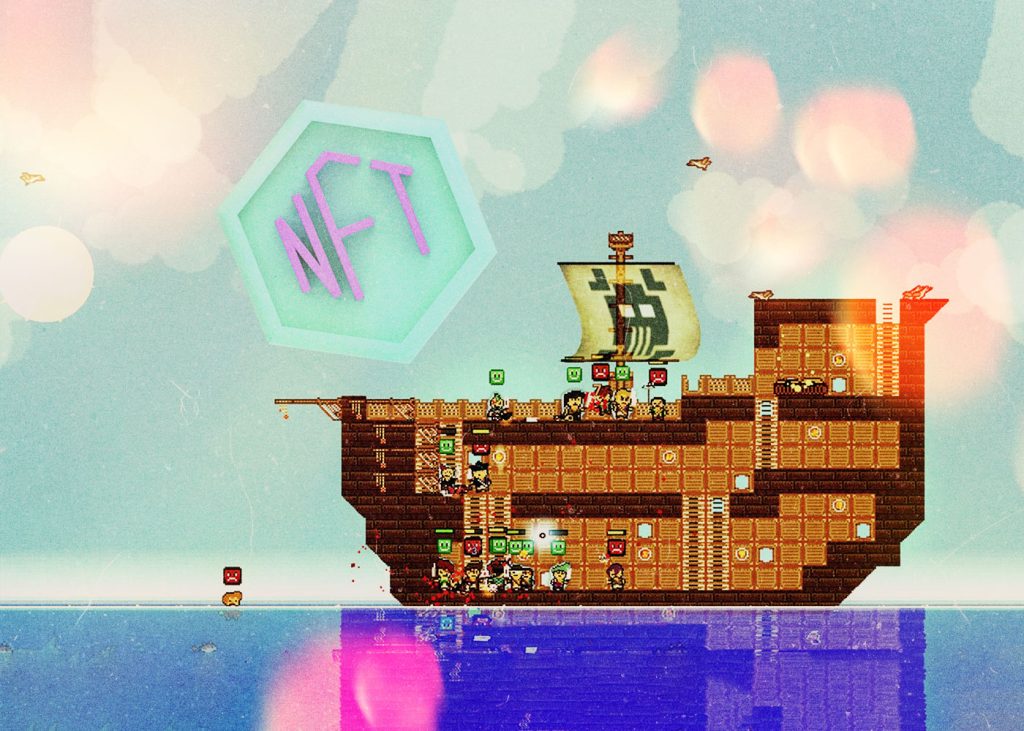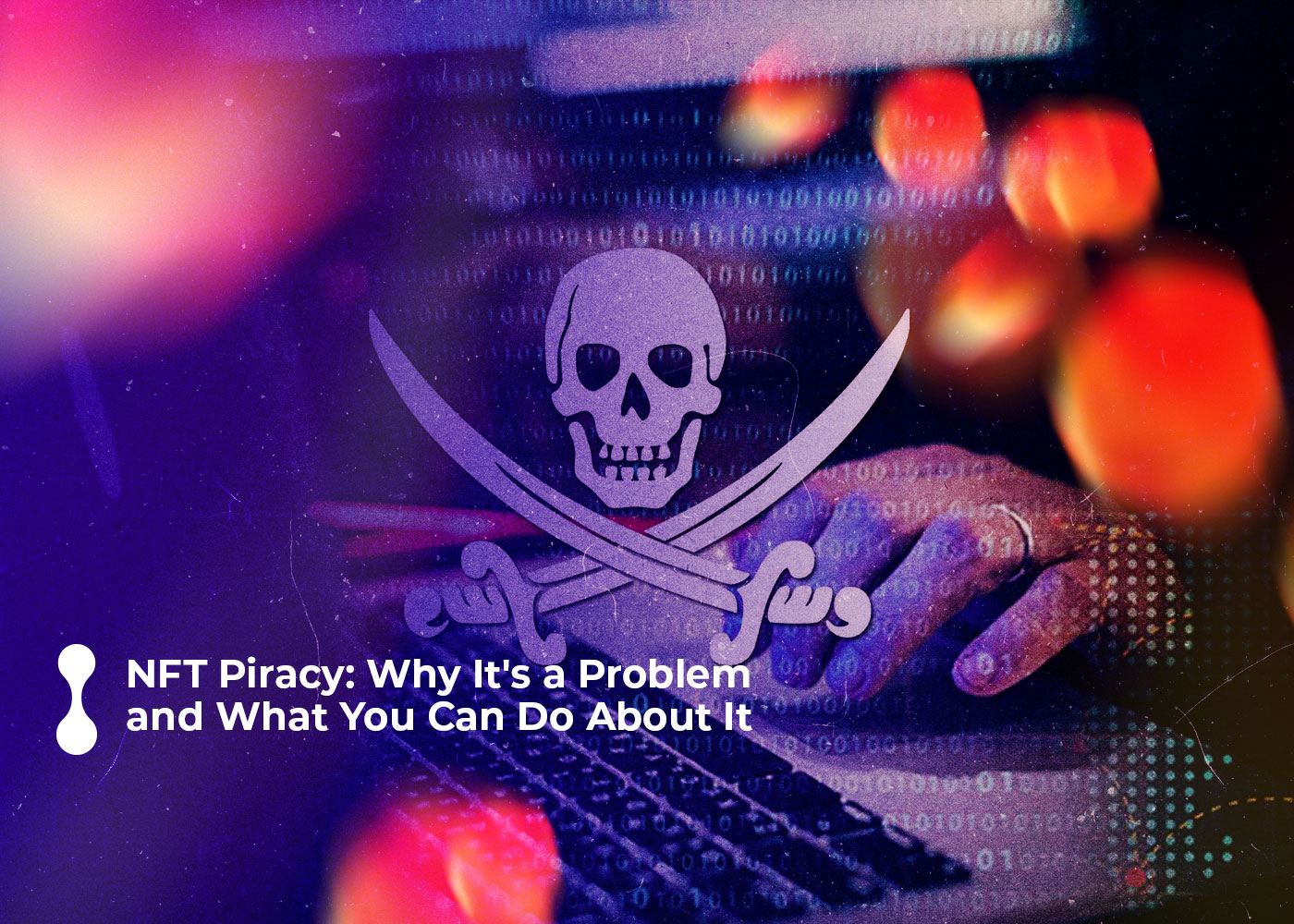NFTs have profoundly altered the art world, giving artists another way to market their pieces and collectors a chance to invest in one-of-a-kind digital assets. Unfortunately, as NFT popularity continues to soar, so does piracy of these treasured works; unauthorized copies are being duplicated and sold without regard for the original creator’s wishes. With its ability to erode the legitimacy of NFTs as a viable investment, piracy presents an ominous threat to the future of digital artwork. In this post, we will investigate why NFT piracy poses such a substantial danger and how it affects both artists and collectors alike before going into what steps can be undertaken for prevention.
What Is NFT Piracy?
NFT piracy is a rampant issue in the digital world. Utilizing blockchain technology, these unique assets authenticate and protect digital art, music, and other creative works from pirating. Unfortunately, NFT piracy occurs when unscrupulous individuals create unauthorized copies of an original asset and then try to sell them as if they were genuine – often at discounted rates. This devalues the artist’s work and undermines their hard-earned success on the platform. Pirating NFTs threatens to diminish the worth of authentic products and can generate colossal losses for both creators and buyers alike. The art world is no stranger to this problem, so researchers are working hard to create new technologies and approaches that will help reduce it.

Types of NFT Piracy:
There are several types of NFT piracy. Here are some examples:
Unauthorized Copying and Distribution of NFTs:
NFT piracy is a malicious act when an unauthorized copy of an existing NFT is created and sold without the consent or knowledge of its rightful creator. This digital forgery may be crafted on various blockchain platforms, trying to deceive unsuspecting buyers into believing it’s genuine. Consequently, this can severely diminish the original item’s value and cause considerable financial harm to all involved parties – both those who own the authentic piece and those who have been duped by purchasing its counterfeit version.
Counterfeiting NFTs:
Counterfeiting is an underhanded method of NFT piracy in which criminals craft forgeries of the true asset that look real. The counterfeiters will typically mimic the artwork, titles, and descriptions to fool people into buying what they think is genuine – only later to discover their mistake and never receive what was purchased. This evil practice can lead to serious repercussions as innocent victims may not get back any money spent on it.
Repurposing of Existing NFTs without Permission:
Repurposing is an act of creative thievery that happens when someone takes a current NFT, modifies it without the consent of its creator or owner, and then uses it for another purpose. This could be anything from changing the artwork, title, or description to utilizing their work in ways they never intended. Unfortunately, repurposing can damage both the reputation and intellectual property rights of any original artist who had nothing to do with this unethical modification.
Risks and Consequences of NFT Piracy:
Understand the risks and consequences of NFT piracy with these comprehensive explanations:
Risks of NFT Piracy
- Financial losses for creators and original owners: The piracy of NFTs can drastically affect creators and rightful owners financially. When illicitly reproduced versions are distributed for less, it lowers the demand for the original assets, leading to profit loss. This reduces their value and undermines their legitimacy in the eyes of consumers; this then causes creatives to become hesitant when considering producing new NFTs in fear of them being replicated.
- Damage to the reputation of the NFT marketplace: Pirated NFTs can significantly weaken the standing of any given marketplace, as it reduces trust in both the authenticity and worth of digital art and investments. This lack of confidence deters potential creators from joining or investing, directly hindering growth and stability within the NFT landscape.
Consequences of NFT Piracy
- Legal implications and potential lawsuits: NFT piracy can be considered a form of intellectual property theft and lead to expensive legal battles, and it can significantly inhibit the market. Creators and original owners have several options for obtaining justice through pursuing legal action against those who partake in such activity. However, these proceedings may take months or even years to conclude, thereby discouraging buyers from investing their time and money into projects that could be marred by litigation – negatively affecting both creatives and consumers alike.
- Creation of a black market for NFTs: Piracy of NFTs can create a black market, where unauthorized and illegal transactions occur without the knowledge or consent of their rightful owners. This could result in a substantial loss to creators who cannot reap the rewards for their creations and diminish trust within the whole industry; no buyer would want to purchase an illegitimate asset after all! Ultimately, this lawless behavior is detrimental to individual artists and anyone relying on a safe environment for trade and exchange.
Prevention and Solutions
Protect your Non-Fungible Tokens (NFTs) from potential piracy by considering these solutions:
- Watermarking: Creators can watermark their NFTs, ensuring that no unauthorized reproductions and distributions occur. A visible watermark conveys legitimacy to any viewers, thus deterring potential pirates in the process.
- Digital signatures: With a digital signature, creators can ensure the authenticity of their NFTs and help to avoid any counterfeit or changed versions that might appear.
- Copyright registration: Creators can claim copyright for their NFTs at a government agency, granting them legal protection and allowing them to take legal action against any individual or entity that engages in illegal reproduction.
- Use of blockchain technology: Blockchain technology can help safeguard against piracy by providing a surefire method for authenticating ownership when creating and distributing NFTs. With its secure and transparent approach, blockchain is the ideal solution to verify authenticity with integrity.
- Collaboration between marketplaces and creators: Marketplaces have the power to work closely with creators to devise efficient tactics for avoiding any form of piracy. This can be done by delivering educational material or employing technological solutions to secure NFTs from being unlawfully copied and distributed.
- Educating buyers and sellers: To mitigate NFT piracy, it is essential to inform buyers and sellers about the risks associated with such activities. This could comprise guidance on verifying an NFT’s authenticity and instructions on reporting any suspected cases of piracy.
Final Words:
To sum up, NFT piracy is an issue that shouldn’t be taken lightly due to its ripple effect on creators, purchasers, and the entire digital asset trading market. Its consequences can range from economic repercussions to lawsuits and even a black market for non-fungible tokens—making it essential we do our part in curbing this growing problem. Thankfully, we can safeguard NFTs from piracy by utilizing various countermeasures such as watermarking, digital signatures, and copyright registration. Moreover, blockchain technology, marketplaces’ collaboration with creators, and educating buyers & sellers are essential to guarantee the value and authenticity of non-fungible tokens. By employing these approaches effectively, we can ensure that they continue to be a profitable form of digital artistry & investment for many more years to come!
